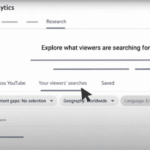Marketing Regulations Every Mortgage Lender Should Know

Advertising in the mortgage industry is very regulated with mortgage regulations. There are many restricted words and phrases. Mortgage lenders must make sure that they are compliant when marketing. They cannot discriminate between buyers. All loan terms and interest rates must be clearly defined. Violations of the rules can lead to fines and penalties. To stay compliant, make sure your company follows the rules. A few regulations to be aware of are:
1. Regulation Z
Regulation Z is the Truth in Lending Law. It requires that advertising for mortgage loans is not misleading. Loans must be available to those who qualify. The primary goal of Regulation Z is to provide consumers with the actual cost of credit. Lenders must disclose interest rates in writing, and they must use clear language about loans and credit terms. This allows consumers to compare credit terms more knowledgeably.
Under Regulation Z, lenders must provide consumers with the nominal interest rate and the annual percentage rate (APR) of a loan. The APR is more realistic than the nominal rate, and it’s comparable between lenders and includes any fees the borrower must pay. The advertising regulation also allows consumers to cancel loans within a certain period, and the Federal Trade Commission enforces it.
2. Regulation N
Regulation N is the Mortgage Acts and Practices in Advertising law. It includes rules and requirements for commercial marketing materials. The law was established by the Consumer Financial Protection Bureau (CFPB) and the Federal Trade Commission (FTC). Mortgage Act decides what financial products constitute mortgage credit products. It also tells mortgage brokers how they may advertise their products to clients.
Regulation N prohibits deceptive claims in mortgage advertising. For example, lenders cannot advertise a low fixed-rate loan without specifying how it will change over the long term. Other examples of deceptive claims include:
- Not indicating consumer fees associated with a mortgage
- Misrepresentation of the type of mortgage
- Not providing the variability of interest rates
All loan officers and mortgage brokers must follow Regulation N.
3. Regulation B
Regulation B is known as the Equal Credit Opportunity Act. ECOA does not include technical requirements for advertising. It does prohibit mortgage lenders from practices that discriminate against certain factors. These factors include age, gender, ethnicity, nationality, and marital status.
Congress created Regulation B to ensure that loans are available to all creditworthy customers. This means that any factor not related to credit cannot be used when making a loan approval decision. Regulation B covers a creditor’s actions before, during, and after a credit transaction. The primary purpose of Regulation B is to prevent discrimination.
Using BNTouch Mortgage CRM
BNTouch Mortgage CRM can help loan officers and mortgage brokers maintain marketing compliance. The platform offers many marketing templates that mortgage professionals can use. It also includes a digital loan platform to simplify the borrowing process.
If you are seeking a Mortgage CRM, contact BNTouch for a free demo today!
The post Marketing Regulations Every Mortgage Lender Should Know appeared first on .





